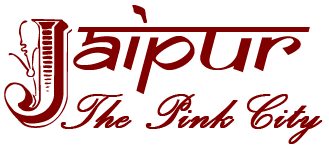|
|
Holidays >> Travel >> Things to do >> India >> Rajasthan >> Jaipur >> Heritage >> Monuments >> Jantar Mantar
Jantar Mantar Jaipur
Jantar Mantar, An Observatory, World Heritage Site, Monuments in Jaipur, Hot spots for Jaipur Heritage Tour, Special Attractions in Jaipur Tour, Hotels, Cheap Flights, Holidays, Travel, Vacations, Trip Advisor, Things to do, India, Travel Agency, Air Tickets, Heritage, Jaipur, Travel Planner, Monuments, Rajasthan
Krantivritta Yantra
It is situated on the north of the hemispherical sun-dial and is a metal instrument which rotates on a masonry base. It consists of two metal frames and these two frames and their base together make an angle of 47o. It is used for measuring celestial latitude and longitude.
The Horizontal Sun-Dial
It can be seen only from the top of Narivalaya . At the north-south centre it has a 27o triangular gnomon whose shadow indicates time in Ghatis . The time observed can be verified by the hemispherical sun-dial.
Unnatansha Yantra
Situated in the north-eastern corner of the observatory, this instrument is a big circle made of metal, about 5 meters in diameter and hanging on a stone support. It rotates in a vertical plane. The circle is divided into 4 equal segments of 90o each. There is a hole in the centre of the instrument. It is used to determine the altitude of the stars and planets.
Dakshinottara Bhitti Yantra (Meridian Wall)
 Situated in the north-eastern corner of the observatory, it is a vertical instrument built in the plane of the local meridian. The east face of the instrument is inscribed with two quadrants of 20 feet radius and on the west face a semi-circle of 19 feet 10 inches radius. At the centers of quadrants and semi-circle, short pegs are fixed. The eastern and western faces of this instrument comprise two meridian instruments of slightly different shapes but meant for the same observations. The instrument is mainly used for observing the different altitudes of the heavenly bodies. Situated in the north-eastern corner of the observatory, it is a vertical instrument built in the plane of the local meridian. The east face of the instrument is inscribed with two quadrants of 20 feet radius and on the west face a semi-circle of 19 feet 10 inches radius. At the centers of quadrants and semi-circle, short pegs are fixed. The eastern and western faces of this instrument comprise two meridian instruments of slightly different shapes but meant for the same observations. The instrument is mainly used for observing the different altitudes of the heavenly bodies.
Rashi Yantras or Rashivalaya
It is a group of 12 instruments which depict 12 zodiac signs (Rashis). These are situated on a rectangular platform near the Southern wall of observatory.
They look like miniature of Samrat Yantra but differ in their function. The quadrants of Samrat Yantra represent the equator while the quadrants of Rashivalaya represent the ecliptic at the moment of observation. The pole of the ecliptic is not a fixed point but is defined as a circle of 23o 27 radius around the pole.
The angles of the gnomons of all the instruments are different from one another because each Zodiac sign is situated at a different position from the Ecliptic.
The instruments are used for observing latitudes and longitudes of the sun and the planets. Each instrument can be used every two hours when each sign of Zodiac reaches the local meridian. For calculating a particular sign of Zodiac culminating on the local meridian at the time of calculation, the Jai Prakash Yantra is used. For finding out the celestial position of the heavenly body, the corresponding zodiac instrument is used.
Suggested Readings for Jaipur
Jaipur Forts and Monuments
Jaipur Travel Guide
Jaipur Festivals and Fairs
Tags:
Jantar Mantar, World Heritage Site, An Observatory, Forts in Jaipur, Monuments in Jaipur, Hot spots for Jaipur Heritage Tour, Special Attractions in Jaipur Tour, Hotels, Cheap Flights, Holidays, Travel, Vacations, Trip Advisor, Things to do, India, Travel Agency, Air Tickets, Heritage, Jaipur, Travel Planner, Monuments, Rajasthan, Car Rentals, All Inclusive Packages, Jaipur the Pink City, jaipurthepinkcity.com
|
Choose Best Travel Plan
Our Trip Advisor and Travel Planner will analyze your requirements and will help build your travel itinerary and provide suggestions. It will
SAVE your TIME and MONEY.
|
|
|
Comments
Jantar Mantar Page 1 | 2 | 3 |
4
|

